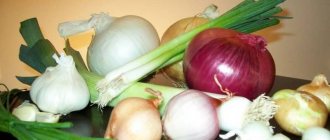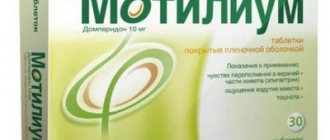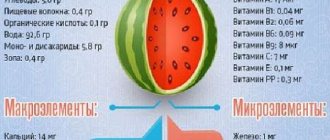Buckwheat for gastritis is considered one of the healthiest cereals, since it contains vitamins, microelements, and amino acids necessary for the normal functioning of the body. When growing crops, no fertilizers are used, which reduces the risk of negative reactions to the product.
Buckwheat is known for its unique components and healing properties.
Is it possible to eat buckwheat if you have gastritis or ulcers?
Some types of cereals have an aggressive effect on the gastric mucosa, but buckwheat is not one of them. It is important to know the nuances of its use, especially if the patient has an exacerbation of gastritis or another serious form of the disease.
How does it affect the stomach?
Well-cooked buckwheat is useful not only for problems with the gastrointestinal tract, but also for iron deficiency anemia and many other pathological processes in the body.
Properties of buckwheat that affect the stomach:
- has a gentle effect on the walls of the organ;
- does not injure or irritate the esophagus;
- almost completely absorbed;
- reduces the risk of developing inflammatory processes;
- does not cause bloating or other unpleasant symptoms;
- for various pathologies of the organ, the buckwheat diet can be long-term without subsequent complications and side effects.
Buckwheat and stomach acidity
For stomach diseases, when most foods are classified as prohibited, buckwheat can be consumed without fear for your health. With various forms of gastritis, the acid balance in the stomach is disturbed. In this case, diet is one of the mandatory components of treating the disease, since the damaged digestive organ is not able to function fully.
With increased acidity, gastric juice is produced in excessive quantities, which causes damage to the mucous membrane of the organ. Therefore, the diet should consist of foods that do not provoke excessive secretion of juice and reduce its acidity. Buckwheat takes the leading place among them.
The peculiarity of gastritis with low acidity is insufficient production of hydrochloric acid, which is why the necessary enzymes and gastric motility are not activated. As a result, food is poorly digested, which leads to rotting and bacterial growth.
This leads to various problems: poor appetite, constipation, heaviness and discomfort in the stomach, dysbacteriosis and hypovitaminosis. The inflammatory process gradually develops and the structure of the mucous membrane is disrupted.
In this case, the power supply scheme is completely different. It is important, in addition to buckwheat, to choose foods that stimulate gastric secretion.
Reference. For any form of gastritis, it is important to eat only those foods that are easy to digest. For example, buckwheat should not be eaten with canned food and bread.
For stomach ulcers
If acidity remains elevated for a long time, an inflammatory process begins to develop, accompanied by the appearance of erosions on the gastric mucosa. Over time, they degenerate into ulcers.
In addition to treatment with antibacterial drugs, gastroenterologists recommend following a strict diet, which necessarily includes buckwheat. Thanks to its structure, it envelops and protects the mucous membrane from aggressive factors, which promotes the healing of ulcers.
Application in medicine
Considering that buckwheat contains a wide range of useful substances, it is successfully used in folk medicine. To prepare medicinal potions, whole, unroasted cereal grains (green), as well as leaves and shoots of buckwheat, are used.
Traditional recipes:
A mixture for stagnation of bile, high sugar, pancreatitis, poisoning. To prepare the composition you will need 15 grams of buckwheat flour and 250 milliliters of low-fat kefir. The first ingredient is obtained by grinding cereals in a coffee grinder, and the second is obtained by fermenting homemade milk. Both products are combined and left in the container overnight. The resulting mixture is eaten for breakfast. The duration of choleretic therapy is 1 month. After 30 days the course is repeated.- A remedy for anemia, chronic fatigue, weakness. Before creating the potion, the cereal is washed and then dried in a frying pan. After this, the kernel is ground in a coffee grinder. Buckwheat flour is taken 30 grams 4 times a day, in between meals.
To enhance the therapeutic effect, the powder is washed down with warm milk. Use the product for at least 30 days (until the condition improves). If necessary, after a month's break the course is repeated.
- Buckwheat jelly to strengthen the cardiovascular system and prevent atherosclerosis. The composition of the healing product includes 45-50 grams of cereal (pre-crushed in a coffee grinder) and 250 milliliters of water. Combine these ingredients and mix thoroughly. After this, the mixture is poured in a thin stream into a liter of boiling water. The jelly is simmered over low heat for 10 minutes. Take buckwheat mixture 3 times a day, 200 milliliters.
- Healing ointment for abscesses, boils, and difficult-to-heal wounds. Crushed buckwheat (45 grams) is combined with a decoction of celandine (50 milliliters). The healing mixture is applied to the affected area three times a day for 10 minutes.
- Buckwheat sprouts for healing the body. The grain is rinsed with clean water and then placed on damp gauze. The container with the raw materials is placed on the windowsill. Considering that green buckwheat secretes a lot of mucus, the fabric and cereal are washed daily with water. With proper care, seedlings appear on the 2nd day. For medicinal purposes, slightly “hatched” grain (1-4 millimeters) is used [8].
Remember, the length of the sprouts should not exceed 1 centimeter.
Indications for use: anemia, obesity, vitamin deficiency, inflammation of the gallbladder, arthritis, pathologies of the organs of vision, atherosclerosis, coronary heart disease, varicose veins [9].
- Powder for babies. The crushed buckwheat kernels are sifted through a fine sieve. The resulting powder is used for the prevention and treatment of diaper rash in children (in the absence of lycopodium).
Beneficial properties of buckwheat for gastritis and other stomach diseases
The value of buckwheat is justified by its chemical composition and beneficial properties. The product is dietary, low-carbohydrate, rich in vegetable protein, amino acids, B vitamins, as well as PP, E and minerals: iron, potassium, calcium, phosphorus, iodine.
Buckwheat for stomach ulcers, gastritis and other diseases has the following effects:
- Serves as a reliable natural protection against the adverse effects of hydrochloric acid.
- Thanks to the content of vitamins and nutrients, it strengthens the immune system and improves the patient’s condition.
- Reduces the severity of symptoms of the disease.
- Prevents the proliferation of bacteria during the inflammatory process in the stomach.
- Improves the regenerative properties of the mucous membrane due to the content of vitamin PP.
- Does not increase the secretion of digestive juice.
- Cleanses the intestines and prevents the development of diarrhea and constipation.
General information
Buckwheat is considered an environmentally friendly product, since its cultivation technology does not require the addition of chemicals during sowing. The cereal is cultivated primarily for culinary purposes [1]. However, thanks to its rich chemical composition, cereals are popular in diet therapy, medicine, cosmetology, and agriculture.
The following types of buckwheat are distinguished:
- kernel (whole grain, peeled from the outer shell);
- prodel or chaff (crushed cereal with a broken structure);
- Smolensk flakes (highly crushed grains).
Classification of buckwheat by type of heat treatment:
- fried (dark brown);
- steamed (brown);
- natural (light green).
Remember, the smaller and darker the grain, the fewer nutrients it contains [2].
How does buckwheat affect acidity?
Nutritionists recommend consuming buckwheat for both high and low stomach acidity.
Increases or decreases
A therapeutic diet based on buckwheat does not increase the concentration of gastric juice. Consequently, well-cooked cereal can even reduce acidity. When prescribing a diet, the doctor describes in detail the permitted and prohibited foods that can complement the buckwheat side dish.
Reference. Buckwheat is both a low-acid and alkaline product.
How to eat buckwheat with high acidity
There are general rules for preparing and consuming buckwheat, which are followed in case of problems with the digestive system:
- Cereals are cooked only in water, since milk reduces the digestibility of the product.
- Dishes should be warm (not too hot and not too cold).
- For cooking, they buy cereals that are not thermally processed, because they contain more useful microelements.
Question answer
I really like porridge, especially buckwheat, but I was diagnosed with erosive gastritis. Is buckwheat contraindicated for me or not?
For erosive gastritis, the diet prescribed is quite strict, but among the permitted foods there are porridges, including buckwheat. It is better to cook it in water or milk diluted 1:1 with water.
References: med.vesti.ru/articles/zabolevaniya/dieta-pri-gastrite-zheludka/ https://www.kp.ru/guide/chto-mozhno-est-i-pit-pri-gastrite.html Nutrition for gastric diseases, Ilya Melnikov 2009. Notes from the author of the article, based on personal experience. This material is purely subjective and is not a guide to action. Only a qualified specialist can determine an accurate diagnosis and prescribe treatment.
Last modified: 03/12/2020
Features of consuming buckwheat for gastritis or ulcers
For gastritis or ulcers, buckwheat is eaten boiled and ground or in the form of jelly. This is a light product that, when used correctly, improves digestion.
In ground form
For stomach diseases, buckwheat is often consumed in ground form. To do this, dry cereal is passed through a coffee grinder or meat grinder, and then steamed for 2-3 hours.
They eat porridge along with a small amount of boiled lean meat or fish. For gastritis, experts recommend additionally including baked or boiled vegetables in your diet.
This dish is good for breakfast or dinner. Portion – 100-150 g.
Boiled
Cook without salt, exclusively in water. Buckwheat should turn out crumbly. This dish is best eaten for lunch, as it is more filling. Baked vegetables are added to buckwheat.
Kissel
With constant use, jelly helps:
- remove constant pain and reduce discomfort;
- fight inflammation;
- accelerate the healing of the stomach walls;
- stimulate the digestive system.
It is most beneficial to drink jelly 1 hour before meals. The drink is also suitable for an early breakfast, as it helps awaken the gastrointestinal tract.
Medicinal recipes with buckwheat
The easiest way is to cook buckwheat. But there are many different recipes with this grain that will help diversify the menu during a strict buckwheat diet for gastritis or ulcers.
For gastritis with high acidity
For gastritis with high acidity, the main dish is watery buckwheat porridge. It is consumed with steamed or boiled pieces of fish or meat, lean cutlets or boiled vegetables.
To make the diet more varied, it is allowed to make buckwheat-meat cutlets. To do this, the porridge is cooked until half cooked and mixed with chicken or dietary veal mince. Carrots and egg yolk are also added there. Small meatballs are formed from this mixture and stewed in the oven.
With reduced
Buckwheat cutlets are good for low acidity.
For preparation you will need:
- 1 tbsp. boiled buckwheat;
- 1 carrot;
- 1-2 eggs;
- dill and parsley;
- butter.
Buckwheat porridge, butter and chopped carrots are ground in a blender. After this, eggs and herbs are added to the resulting mass. Make small cutlets and steam for 30 minutes.
For ulcers
If you have an ulcer, you have to follow a strict diet. To diversify your diet, buckwheat with zucchini and mushrooms is good.
For preparation you will need the following ingredients:
- buckwheat – 1/2 cup;
- champignons – 100 g;
- carrots – 1 pc.;
- zucchini – 1 pc.
Buckwheat is boiled for 7 minutes. The carrots are finely grated, and the zucchini is cut into thin strips. Vegetables are stewed until half cooked.
Thinly sliced mushrooms are fried in a second frying pan. After that, they are mixed with buckwheat and vegetables. The mass is poured into a baking dish, a little water is added and simmered for 20 minutes in the oven at 200°C.
Chemical composition
Buckwheat is the record holder for protein content among cereals. The biological value of the crop protein is determined by the 18 amino acids present in the cereal. The highest concentrations are found in lysine, tryptophan, arginine, methionine, valine, isoleucine, and glycine.
Interestingly, in terms of protein content, buckwheat is a complete alternative to animal protein.
To supply the body with this building material, it should be present daily in the menu of athletes, vegetarians, pregnant women and the elderly. Table No. 1 “Chemical composition of buckwheat”
| Item name | Ingredient content in 100 grams of cereal, milligram [3] |
| Vitamins | |
| Tocopherol (E) | 6,65 |
| Niacin (PP) | 4,2 |
| Riboflavin (B2) | 0,2 |
| Pyridoxine (B6) | 0,4 |
| Thiamine (B1) | 0,43 |
| Folic acid (B9) | 0,032 |
| Beta-carotene (A) | 0,002 |
| Macronutrients | |
| Potassium | 380 |
| Phosphorus | 298 |
| Magnesium | 200 |
| Sulfur | 88 |
| Chlorine | 33 |
| Calcium | 20 |
| Sodium | 3 |
| Microelements | |
| Silicon | 81 |
| Iron | 6,7 |
| Zinc | 2,03 |
| Manganese | 1,56 |
| Copper | 0,64 |
| Bor | 0,35 |
| Titanium | 0,034 |
| Molybdenum | 0,033 |
| Fluorine | 0,023 |
| Nickel | 0,0101 |
| Selenium | 0,0083 |
| Chromium | 0,004 |
| Iodine | 0,0033 |
| Cobalt | 0,0031 |
The nutritional value of buckwheat includes (per 100 grams):
proteins – 13.5 grams;- fats – 3.4 grams;
- carbohydrates – 61.5 grams;
- water (14 grams);
- organic acids (0.2 grams);
- dietary fiber (11.3 grams) [4];
- starch (55.4 grams);
- unsaturated fatty acids (2.28 grams);
- mono- and disaccharides (1.5 grams);
- saturated fatty acids (0.67 grams);
- amino acids (10.32 grams);
- sterols (0.074 grams)
- ash (2.1 grams);
- purines (0.06 grams).
The calorie content of a product directly depends on the cooking method. Thus, dry (sprouted) grain contains 330 kilocalories per 100 grams of product, boiled cereal - 150 kilocalories, steamed kernels - 250 kilocalories.
Considering that the cereal does not contain gluten (gluten), buckwheat is of particular value for people suffering from celiac disease.
How to eat buckwheat during exacerbation of gastritis
It is important to consume any food (including buckwheat) in portions. Overeating is not allowed. During an exacerbation, the product is eaten in crushed or grated form.
If your stomach hurts
In the first days of an exacerbation, the patient is usually recommended to refuse food, replacing it with water, weak tea or rosehip infusion. For a sick stomach, liquid, viscous buckwheat porridge is introduced into the diet on days 2-3. It envelops the walls of the organ, which helps the mucous membrane to recover faster.
Buckwheat for weight loss
Despite its high energy value, buckwheat has a low glycemic index. This is an absolutely dietary product, on the basis of which many weight loss schemes, fasting days and food rations have been compiled [10].
The effectiveness of buckwheat diets is due to the prolonged breakdown of the grain in the stomach, which dulls feelings of hunger. At the same time, the body is forced to provide itself with nutrients by burning fat reserves from the depot. As a result, metabolism accelerates, and a person loses excess weight faster. In addition, cereal contains many useful elements that help a person lose weight while maintaining a good mood, strong nails, healthy skin and thick hair.
The buckwheat diet is easy to use, as it contains cereals and water. The duration of mononutrition varies from 3 to 14 days (depending on the goals). A three-day weight loss scheme is classified as fasting days. It helps the body cleanse itself of toxins and burn up to 1.5 kilograms of excess weight. To eliminate 5 to 10 extra pounds, the buckwheat diet is extended to 14 days.
How to cook cereal correctly?
Buckwheat is steamed in the evening for the entire next day. To do this, 300 grams of washed kernels are poured with a liter of boiling water. The vessel is wrapped in a blanket and left for 10-12 hours on the stove.
Remember, adding sugar, salt or seasonings to a dietary dish is strictly prohibited.
If the mono-diet is poorly tolerated, it is recommended to use a milder version of the technique and include kefir in the diet.
Acceptable power schemes:
- Pour 350 grams of buckwheat with a liter of low-fat kefir. Leave the porridge for 10 – 12 hours in a warm place. Throughout the day, consume only the resulting mixture.
- In the morning, lunch and evening, eat exclusively steamed buckwheat, and during snacks, consume 250 milliliters of low-fat kefir. The daily intake of fermented milk drink is 1-1.5 liters.
The duration of the kefir-buckwheat diet should not exceed 14 days.
To consolidate the result, return to your previous diet gradually. In the first 4 days of “going out”, in addition to buckwheat, eat only easily digestible foods (fruits, low-calorie yogurt, kefir, honey, vegetable salads, greens), and then gradually increase the calorie content of the diet to normal.
Contraindications to the use of the buckwheat diet: gastritis, stomach ulcers, duodenal erosion, diabetes mellitus, intestinal disorders, hypertension, pregnancy, lactation, old age and adolescence.
Contraindications
Buckwheat is a very healthy product, but in some cases it should not be consumed when there are contraindications.
The buckwheat diet is prohibited if:
- diabetes mellitus in the stage of decompensation;
- severe heart disease;
- exacerbation of peptic ulcer;
- individual intolerance to the product;
- allergic reactions;
- increased blood clotting.
How to cook buckwheat porridge?
Porridge for gastritis should have a viscous consistency, which will soften the effect on the gastric mucosa and facilitate the absorption of nutrients.
The porridge should be cooked in a thick-walled pan (you can use a special casserole dish, in which the walls also have the required thickness). From 100 grams of buckwheat, about 300 grams of finished porridge comes out. After cooking, the buckwheat can be transferred to a pot, which it is advisable to wrap in a warm blanket and leave to brew for 20-30 minutes. When using, add a piece of butter.
Cooking buckwheat for gastritis correctly
Opinion of gastroenterologists
Gastroenterologists often recommend that their patients consume buckwheat at different stages of pathology. The main thing is to adhere to the recommendations of doctors.
Anna Samoilenko, gastroenterologist: “In addition to regularly consuming buckwheat porridge, it is advisable for patients to normalize their water balance and get rid of bad habits. When following a diet, you need to divide your daily diet into 5-6 meals, eat in small portions.”
Kirill Krivenko, gastroenterologist: “Although buckwheat is a healthy product, you can’t eat only it. The menu should be varied and include vegetables and lean meat. It is also very important to chew everything thoroughly to reduce the burden on the digestive system.”
Buckwheat diets
Buckwheat is an integral component of a healthy diet. The benefits of buckwheat are also evident during the recovery period after certain diseases (anemia, colds, pancreatitis, cardiovascular diseases). Buckwheat is also a great way to prevent certain diseases, such as diabetes, for example. And, of course, weight loss, detoxification and general improvement of the body are indispensable without buckwheat. However, this path is shaky - it’s easy to earn several new diseases from buckwheat instead of improving your health. Girls who incorrectly follow the principles of buckwheat diets very often encounter digestive disorders. What diets will be exclusively beneficial?
Firstly, buckwheat goes well with kefir. This is both a way to get rid of a few extra pounds, and a proven method to normalize well-being during an exacerbation of pancreatitis. The recipe is as follows: sort out a glass of whole kernels, rinse them, pour two glasses of kefir overnight. The next day, eat half the serving on an empty stomach, and the second as dinner. During the day you need to eat well, but with the exception of obviously harmful foods. For lovers of green buckwheat, the sprouted grain can be mixed with kefir and eaten for health.
Secondly, as part of the buckwheat diet, it is better to give preference not to boiled buckwheat in the form of porridge, as part of soups or salads, but to sprouted or steamed buckwheat. To do this, use green buckwheat, it is the richest in chemical composition and, in steamed form, is processed more easily by the body than buckwheat. To prepare buckwheat, place 100-200 grams of cereal in a clay or ceramic container, pour ¾ liter of boiling water, cover with a lid and wrap in a blanket. In the morning you will receive an excellent analogue of boiled porridge, which you need to eat little by little throughout the day.
Thirdly, with or without kefir, but preparing buckwheat for weight loss eliminates the use of seasonings, spices, sauces, sugar and often salt. At a minimum, a buckwheat dish during the entire period of following the diet should be lean and bland, and at a maximum, sugar and sauces should be avoided as part of other dishes. The amount of salt can be moderate.
Fourth, steamed with boiling water, soaked in kefir or sprouted buckwheat in a reasonable amount (about 1-1.5 glasses per day) should be eaten in small portions throughout the day. Usually this is not an independent dish, but rather a folk remedy for weight loss. Doctors recommend not to go on a buckwheat diet so that during the day you only eat buckwheat and drink water. It would be much more correct and healthy to divide 1-1.5 cups of buckwheat porridge into portions; at all meals, give preference to a healthy diet - fruits and vegetables, steamed lean meat and fish, dairy and fermented milk products. You will have to give up processed foods and fast food, fatty foods, sauces, baked goods, and alcohol.
All the principles of a healthy buckwheat diet often boil down to the fact that buckwheat should be a frequent guest in your diet, but far from exclusive. If buckwheat clearly dominates, then the body will not receive many nutrients and vitamins from other foods. Such an unbalanced and limited diet is acceptable for a day or two, but if you follow it for several weeks, completely undesirable changes occur in your metabolism.
Folk recipes
If now, if you have health problems, getting an appointment with a specialist doctor is not a serious problem, then previously people tried to monitor their health, making do with the means at hand. The positive effect of buckwheat on abdominal pain has been noticed for a long time. The following recipes were used:
- Take a plate, add buckwheat and add water in a ratio of one to one (that is, one tablespoon of cereal is poured with one spoon of water). Leave the plate to sit overnight. In the morning, the resulting portion of buckwheat should be eaten about half an hour before meals. Treat with this method for a month.
- Fry the buckwheat (cereals) thoroughly in a frying pan without adding oil. When the cereal takes on a characteristic dark brown color in the frying pan, it should be ground to a powder. Take the prepared powder before meals three times a day.
- If the acidity of the stomach is increased, half an hour before taking buckwheat, you can take 50 ml of freshly squeezed potato juice. The juice will reduce acidity due to its own alkaline environment, and the subsequent intake of buckwheat will have a beneficial effect on the restoration of the gastric mucosa.
G
M
T
Audio feature limited to 200 characters
| Settings: History: Feedback: Donate | Close |











